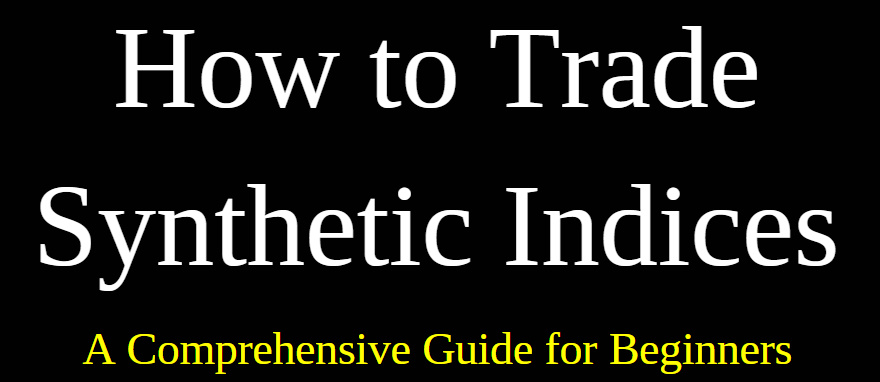
How To Trade Synthetic Indices: A Comprehensive Guide For Beginners.
When it comes to trading, there are lots of opportunities, you as a trader can leverage to have multiple income streams. Besides currencies, crypto and metals, you can also trade Synthetic Indices which have been inthe market for over 20 years with a proven track record.In this comprehensive guide; How to Trade Synthetic Indices: A Comprehensive Guide for Beginners, I will explain what these synthetic indices are and why you need to trade them.
What are Synthetic Indices?
Synthetic Indices are unique indices that mimic real-world market movement but with a twist — they are not affected by real-world events. These indices are based on a cryptographically secure random number generator, have constant volatility, and are free of market and liquidity risks. You can learn how to trade Synthetic Indices profitably by Joining the Basam Mentorship Program here
Why trade synthetic indices
Synthetic indices offer tight spreads and leveraged trades. If you’d like to give synthetic indices a try, you can trade them on Deriv. Depending on your risk appetite, you can try trading Deriv’s proprietary synthetic indices using trade types such as CFDs, options, and multipliers.
Trading synthetic indices give you additional advantages, including:
- You’re aware of the potential risks right from the beginning; you won’t be surprised by unexpected margin calls. Margin calls occur when the balance on your account drops below your margin requirements, resulting in your positions become at risk of being closed automatically. You can fix the situation in two ways — deposit enough funds to increase your equity or close your positions.
- You don’t need a lot of capital to start trading.
- You benefit from the fast order execution and deep liquidity at all times, which is attractive for all traders, whether small or large.
- You can trade these indices 24/7, including weekends and holidays.
- There are different levels of volatility — Volatility 10 Index, Volatility 25 Index, Volatility 50 Index, Volatility 75 Index, and Volatility 100 Index.
In the Volatility 10 Index, the volatility is kept at 10%, which is an excellent choice for traders who prefer low price swings or fluctuations. With the Volatility 100 index, the volatility is maintained at 100%, meaning there are much stronger price swings and no significant price gaps. They are continuous indices with deep liquidity.

The Course will open your mind to the indepth knowledge of how to trade Forex and Synthetic Indices Market profitably with the proven strategy we have been using.
